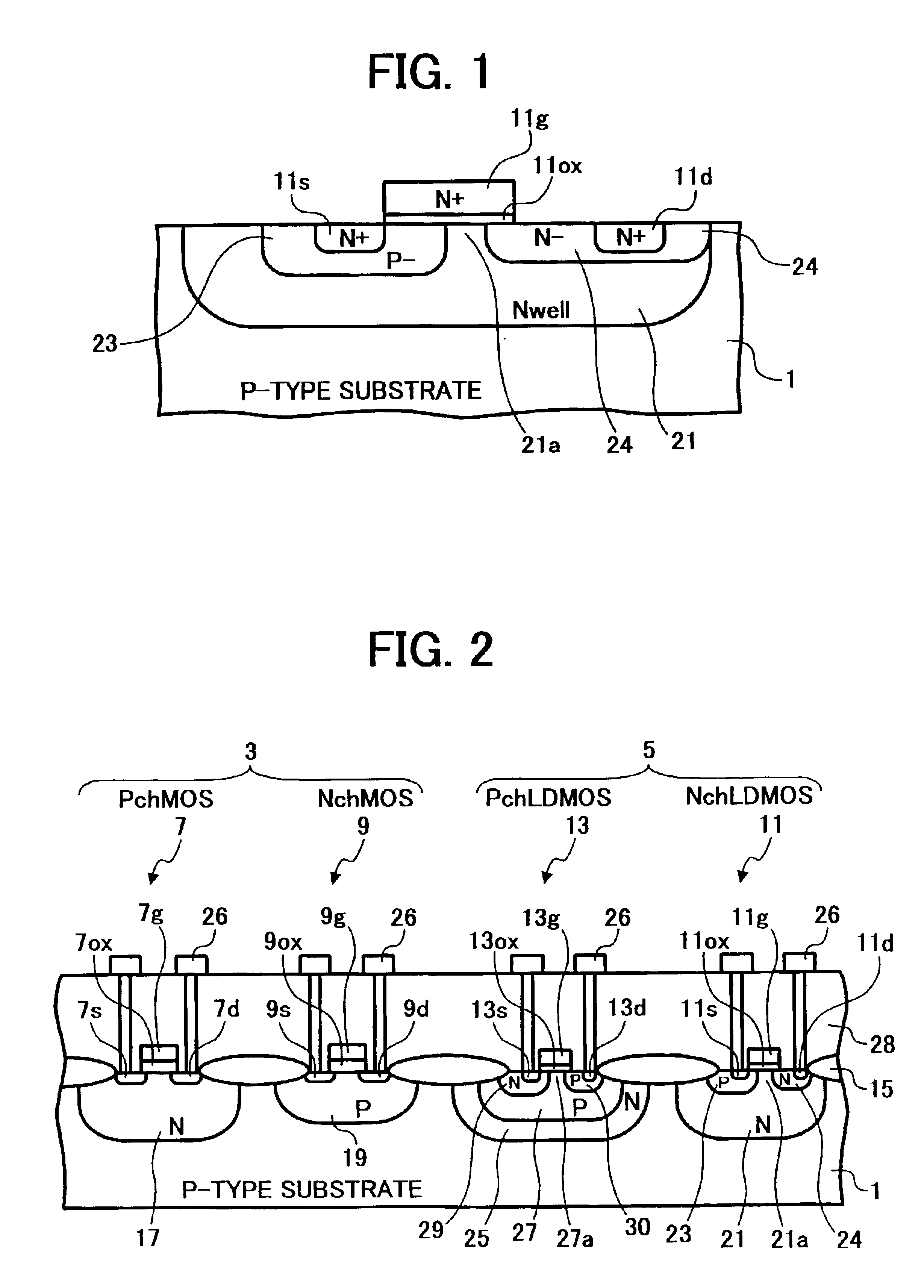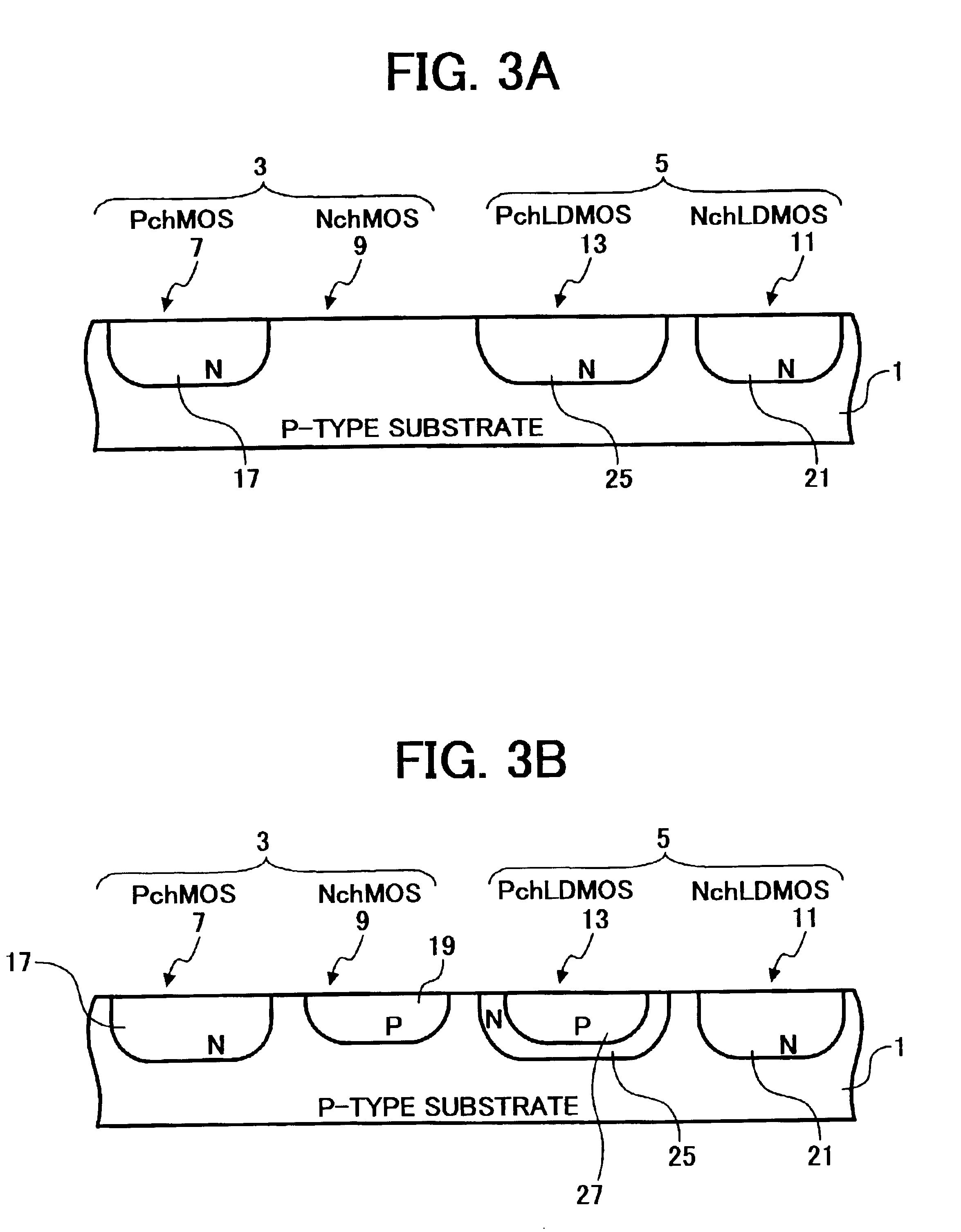Semiconductor device and method for fabricating such device
a technology of semiconductor devices and dielectric layers, applied in the direction of semiconductor devices, electrical equipment, transistors, etc., can solve the problems of inability to increase drain current as desired, difficulty in photolithography, and other problems, to achieve the effect of preventing the breakdown of the gate dielectric layer, and stable operation characteristics
- Summary
- Abstract
- Description
- Claims
- Application Information
AI Technical Summary
Benefits of technology
Problems solved by technology
Method used
Image
Examples
examples
[0143]FIG. 1 is a diagrammatic cross-sectional view illustrating an NchLDMOS transistor according one embodiment disclosed herein.
[0144]Referring to FIG. 1, an N-type drain well region 21 is formed in a P-type substrate 1.
[0145]In the N-type drain well region 21, a P-type well region 23 is subsequently formed, a portion of which serves as a channel region. In addition, an N-type source 11s is formed in the P-type well region 23.
[0146]Also formed in the N-type well region 21 is a medium concentration N-type drain region 24, which is spatially separated from the P-type well region 23 having a concentration of N-type impurities such as, for example, phosphorous ions higher than that of the N-type well region 21.
[0147]Furthermore, an N-type drain 11d is formed in the medium concentration N-type drain region 24 having another concentration of N-type impurities such as, for example, phosphorous ions higher than that of the medium concentration N-type drain region 24.
[0148]An N-type gate e...
PUM
 Login to View More
Login to View More Abstract
Description
Claims
Application Information
 Login to View More
Login to View More - R&D
- Intellectual Property
- Life Sciences
- Materials
- Tech Scout
- Unparalleled Data Quality
- Higher Quality Content
- 60% Fewer Hallucinations
Browse by: Latest US Patents, China's latest patents, Technical Efficacy Thesaurus, Application Domain, Technology Topic, Popular Technical Reports.
© 2025 PatSnap. All rights reserved.Legal|Privacy policy|Modern Slavery Act Transparency Statement|Sitemap|About US| Contact US: help@patsnap.com



